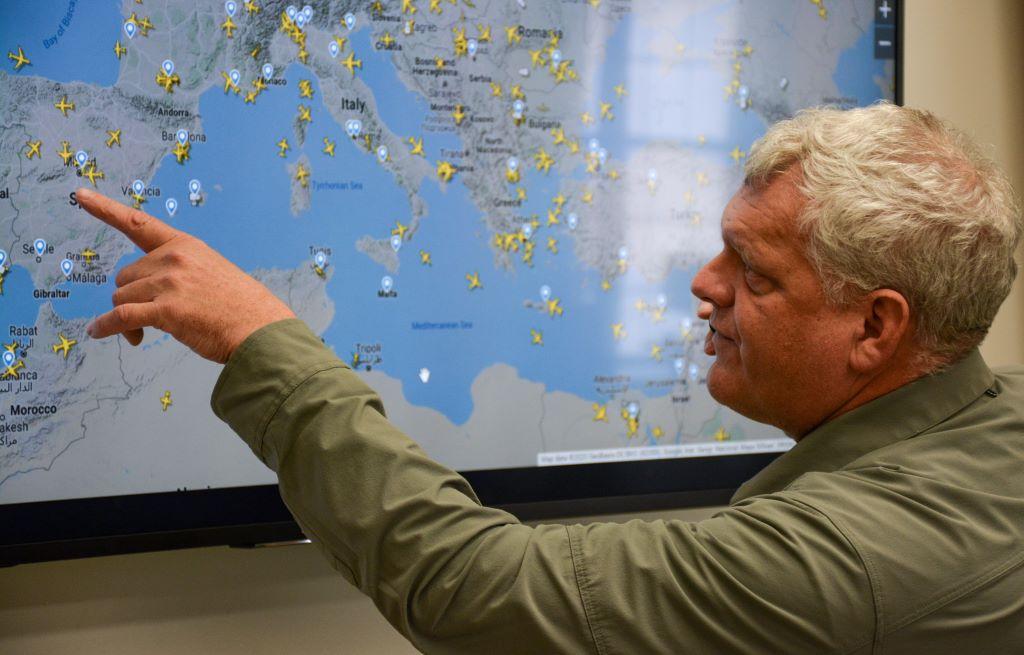
At some point as a crewmember, you might find yourself flying into a dicey location, or hot spot, in the world.
Whether this is because of a natural disaster, a medical evacuation mission or other abnormal circumstance, the possibilities are endless of what you can expect, making preparation highly variable.
With decades of experience working out of the world’s most hostile environments, Harding Bush, a former U.S. Navy Seal and the current security operations manager at Global Rescue, provides insight on how to obtain peace of mind under high-stress circumstances. Global Rescue is a membership organization that provides medical, security, evacuation, travel risk and crisis management services.
There are several steps to consider at every step of travel planning.
Pre-Flight Planning
As with any flight, check NOTAMs and Aeronautical Information Circulars (AICs), but be sure to give them special attention due to the extraordinary circumstances.
“Apart from the legitimate issuing authorities, including the FAA and ICAO, two other great resources to use are safeairspace.net and Opsgroup,” says Bush.
“Safeairspace.net can act as a good one-stop shop if we need complete information regarding the most up-to-date information on conflict zones and risk levels,” he says. Opsgroup, a membership tool providing operational awareness, safety and security standards, is another great resource.
If flying to a highly unstable region of the world, the local aviation authority may not be the best source from which to accept information. If information can’t be provided from a legitimate source, it’s best to leave the gathering of this information to specialists who have extensive experience in a particular type of operation or location.
Most of the missions under Bush’s watch are medical evacuation trips. As such, Bush’s expertise allows him to provide most, if not all, services in-house. For missions to unstable locations that are less common or familiar, however, Bush uses a network of brokers or operators.
Long story short, don’t try and figure everything out on your own. If there are external resources available from others with direct experience, use them.
Personal Life Arrangements
Before accepting a trip to a risky location, whether the mission is planned far in advance or pops up spontaneously, it may be in your best interest to pass on the trip if certain personal arrangements have not been met.
“Something to consider before departure is if your life insurance policy will remain in effect at the destination because in many cases it won’t,” says Bush. “Perhaps you need vaccinations to protect yourself in certain locations. If a particular mission becomes a regular occurrence, you’ll probably need accidental death and disability insurance, and if you really want to go extreme, then kidnap and ransom insurance and war clause insurance are also potential requirements.”
On a more fundamental level, Bush recommends that your personal life outside of legalities and paperwork should also be squared away before taking on a riskier trip carrying a great amount of responsibility.
“You really want to make sure you’re not worrying about your yard or your significant other before taking on a mission that requires your undivided attention,” he adds.
Permitting Process
Part of this step feeds off the information above, as holding certain insurance policies may be mandatory to gaining access to a particular region. However, there are also endless possibilities of other permits to obtain, and these can be highly specific to each location.
One such requirement, and one now starting to become increasingly lenient in some areas, has to do with meeting COVID requirements. Be sure to check whether you will need proof of vaccinations and a negative COVID test before arriving or leaving a destination.
Another issue to be aware of is the nationalities of the crew, especially if there is more than one nationality onboard. This has the potential to create dicey or stressful situations in certain areas of the world.
The aircraft itself may also need certain permits depending on where it is registered.
Understandably, most crew members aren’t lawyers or international operations specialists, so this item may best be left with a trustworthy professional or organization.
Communication
No matter the nature of the mission, this one will likely be the most important and common consideration for any trip. When it comes to your cellular phone, make sure it can be used internationally and is protected. This may include having an international daily phone plan. If on a longer trip, you may want to obtain a chip that has access to one of the local data providers.
For areas of particularly high risk, obtain a new cell phone altogether since your smartphone likely has personal information stored that could be detrimental if stolen.
To take things one step further, in areas where cellular infrastructure and signals are limited, Bush recommends using satellite communication, such as the Garmin inReach Explorer, a satellite communicator with maps and sensors.
Intel: What’s In The News
Looking at social media and local news may be a valuable resource that should not be overlooked.
Using intelligence service companies, such as Global Rescue, may also be considered.
Shelter and Accommodations
If staying overnight, make sure the accommodations have been vetted and you know where you’re staying. More than likely, it will be a good idea to stay close to the airport.
Ground Transportation
In the less common occurrence when staying away from the airport is safer, know who is picking you up and where. Have ways to identify the vehicle and/or driver through a license plate and/or ID if it applies.
Personal Protection
Considerations here may include whether the crew may need gear in case of inclement weather and whether they may need body armor and a local security guard for protection.
Food, Water, First Aid
It’s a good idea to pack extra food and bottles of water so as not to rely on the local supply of these essential resources at your destination. Not being used to the local tap water, for example, can make a crewmember sick, which endangers them even more at the destination or risks their ability to fly out safely.
Though this checklist is not exhaustive, as each mission has its own specific set of challenges, it is a starting point that will have the essentials covered.
“Ninety percent of the process is preplanning,” says Bush. "This way you can focus on the objective, which is flying the airplane to a hot zone, a situation that is stressful in and of itself, rather than wondering where you’ll be staying once you get there, or what’s going on at home.”
